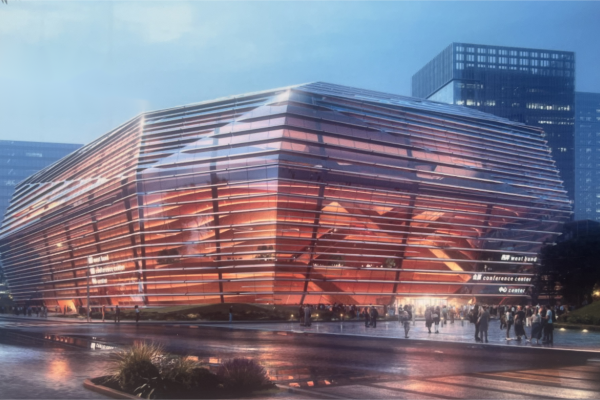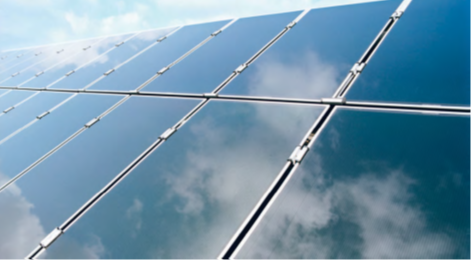The Evolution of Modern Building Design Through Advanced Glass Solutions
The landscape of contemporary architecture is being transformed by innovative architectural glass solutions that push the boundaries of what's possible in building design. As we approach 2025, the integration of cutting-edge glass technologies is revolutionizing how we conceptualize and construct spaces, creating buildings that are not only visually stunning but also highly functional and sustainable.
The architectural glass industry has witnessed remarkable advancement in recent years, with new technologies enabling designers to create increasingly sophisticated and dynamic building envelopes. From smart glass applications to ultra-clear facade systems, these innovations are reshaping our urban environments and setting new standards for modern construction.
Breakthrough Technologies in Modern Glass Architecture
Smart Glass Integration and Digital Control
The emergence of electrochromic and thermochromic architectural glass represents a significant leap forward in building technology. These smart glass solutions can automatically adjust their tint and opacity in response to environmental conditions, optimizing natural light and heat management throughout the day. Building operators can now control glass transparency through sophisticated digital interfaces, allowing for unprecedented levels of environmental control and energy efficiency.
Integration with building management systems enables real-time monitoring and adjustment of glass performance, creating dynamic facades that respond intelligently to changing weather conditions and occupant needs. This technology not only enhances comfort but also contributes significantly to reduced energy consumption and operational costs.
Enhanced Safety and Structural Capabilities
Recent developments in laminated and tempered architectural glass have dramatically improved the structural capabilities and safety features of modern glazing systems. New interlayer technologies and advanced tempering processes create glass that is not only stronger but also more versatile in its applications. These innovations allow architects to design larger, more dramatic glass installations while maintaining superior safety standards.
The integration of specialized ceramic frits and digital printing technologies enables the creation of customized safety patterns and decorative elements, combining aesthetic appeal with functional requirements. These advancements have made it possible to use glass in increasingly challenging architectural applications, from load-bearing structures to expansive skylights.

Sustainable Solutions and Environmental Performance
Energy-Efficient Glass Technologies
The latest developments in architectural glass focus heavily on environmental performance and sustainability. Advanced low-emissivity coatings and multi-layer glass systems offer unprecedented levels of thermal insulation while maintaining optimal visible light transmission. These innovations help buildings achieve superior energy efficiency ratings and contribute to reduced carbon footprints.
Solar control glass technologies have evolved to provide better management of solar heat gain while preserving natural daylight. This balance is crucial for creating comfortable indoor environments while minimizing the need for artificial lighting and climate control systems. The integration of photovoltaic elements within glass panels further enhances sustainability by generating clean energy directly from building facades.
Biodegradable and Recycled Glass Solutions
Environmental consciousness has driven innovation in glass manufacturing processes, leading to the development of more sustainable production methods and materials. New recycling technologies enable the creation of high-quality architectural glass from reclaimed materials, reducing the industry's environmental impact. Some manufacturers are even experimenting with biodegradable glass alternatives for specific applications.
The emphasis on circular economy principles has encouraged the development of glass products that are designed for eventual recycling or repurposing. This approach includes considerations for end-of-life dismantling and material recovery, making architectural glass an increasingly sustainable building material choice.
Aesthetic Innovations and Design Flexibility
Dynamic Color and Texture Applications
The artistic possibilities of architectural glass continue to expand with new technologies for color application and texture creation. Advanced coating processes allow for the development of glass with unique visual properties, including color-shifting effects and customizable opacity levels. Digital printing technologies enable the creation of intricate patterns and designs directly on glass surfaces, offering unprecedented creative freedom to architects and designers.
Innovative surface treatments and finishing techniques provide architects with a broader palette of textures and visual effects. From acid-etched patterns to three-dimensional surface modifications, these treatments create distinctive architectural elements that can define a building's character while maintaining the fundamental properties of the glass.
Curved and Complex Geometries
Advanced manufacturing processes have revolutionized the production of curved and geometrically complex architectural glass elements. New bending and forming techniques allow for the creation of precise curved panels with minimal optical distortion, enabling the realization of bold architectural visions. These capabilities have expanded the possibilities for creating fluid, organic building forms that were previously impossible to achieve.
The development of specialized installation systems and structural solutions supports these complex glass geometries, making it possible to create seamless curved facades and innovative architectural features. These advancements have particularly impacted the design of signature buildings and cultural institutions, where unique architectural expressions are paramount.
Frequently Asked Questions
How does smart architectural glass impact energy efficiency?
Smart architectural glass can significantly reduce energy consumption by automatically adjusting its properties to optimize natural light and heat management. This technology can decrease HVAC costs by up to 20% and lighting expenses by up to 60% in commercial buildings.
What are the latest developments in safety glass technology?
Recent innovations include advanced lamination techniques, improved interlayer materials, and enhanced tempering processes that create stronger, more resilient glass. These developments allow for larger glass panels while maintaining superior safety standards and meeting strict building codes.
What sustainability features are available in modern architectural glass?
Modern architectural glass incorporates various sustainability features, including high-performance low-E coatings, integrated photovoltaic cells, recycled content options, and improved thermal insulation properties. These features contribute to better building energy performance and reduced environmental impact.
